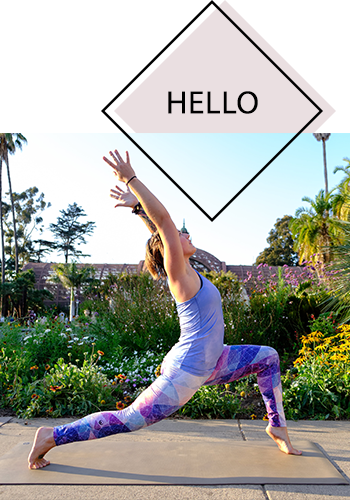Timing Your Vinyasa Yoga Class
/Are you working on sequencing a Baron Baptiste vinyasa flow class?
Post teacher training, there’s a lot of focused effort that goes into planning a class:
What’s your theme? What peak pose do you want to get students into? How much time should you spend on a pose, and what do you do if you’re running out of time in a class, or you need to fill time?
Here are some ideas for how to get your timing down when you go to teach class.
Break it up into sections.
Here’s one template with each section of class, and how much time to spend on it.
Integration: 2 minutes
Child’s pose
Downward facing dog
Forward fold
Awakening: 8 minutes
Sun Salutation A
Sun Salutation B (adding Chair pose and Warrior 1)
Vitality: 5 minutes
Crescent Lunge
Revolving Crescent Lunge
Extended Side Angle
Side Plank
Prayer Twist
Gorilla
Crow pose
Equanimity: 5 minutes
Eagle pose
Standing Leg Raise (front and side)
Airplane
Dancer’s Pose
Tree pose
Grounding: 5 minutes
Triangle
Twisting Triangle
Standing Straddle Bend
Namaste Forward Bend
Igniting: 8 minutes
Locust
Bow
Camel
Bridge
Wheel
Supta Baddha Konasana
Stability (Core): 3 minutes
Scissor Legs
Abdominal Twists
Boat
Rejuvenation: 5 minutes
Shoulder stand
Plow
Deaf Man’s pose
Opening: 8 minutes
Half Pigeon
Double Pigeon
Frog
Release (Forward Bending): 5 minutes
Seated Leg Extension
Seated Forward Bend
Tabletop
Fish
Deep Rest: 5 minutes
Shavasana
Close: 1 minute
Pillars of the Practice
Reminder: in every pose, incorporate the five pillars of power yoga (if you’re going for the Baron Baptiste Power Flow method).
Breath. Breath links your mind to your body, keeping you present.
Heat. Heat creates purification and healing.
Flow. Create dynamic energy by moving between poses. Let your practice be a moving meditation.
Gaze. Wandering eyes equal a wandering mind; focus eyes equal a focused mind.
Abdominal lock. Uddiyana bahdha is a gentle lifting of the pit of the abdomen toward the spine; this draws attention to the core of your body, the epicenter of all movements, increasing stability and strength.
Where’s your edge?
“The edge is where we come right up against ourselves and what we can do and be. It is the boundary between where we are and where we grow, the place of comfortable discomfort, where all growing and healing happens. The edge is the point in every pose when you are still within your capacities but are challenging yourself to go just a little bit farther. Stepping up to this edge and daring to leap is how you break through and thus break with old ways of being.”
-Baron Baptiste, Journey Into Power
Consider, as you sequence and teach your class, where you can give students the opportunity to find their edge.
Need more support?
Consider the Alive in the Fire Yoga Teacher Mentorship program. A one-month program for yoga teachers who want help building their confidence and refining their vision for what and how they teach.
PS Another helpful post on how to memorize a flow.





















